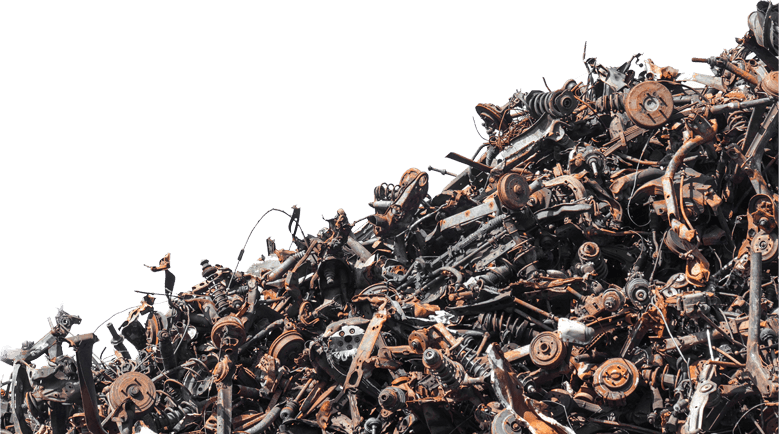When it comes to metal recycling in Melbourne, there’s a lot of stuff that we can take advantage of as a community and as individuals. Most of us have a hoard of recyclable metal in our homes and don’t even know it. But, just to add more to the mix, we’re going to be looking at old motors and we can scrap these and make a profit from them. There are things we can sell and things we can’t when taking apart old motors. Today’s blog is going to dive into what we can and can’t sell and how we can maximise on this.

What’s classified as a motor?
Most people’s minds will automatically draw to car motors when they see the word on its own – but when we say it, we mean motorbikes, lawnmowers, fans, leaf blowers and any other similar devices, power tools or appliances that contain motors within them. No matter their size, they can be pulled apart and certain parts of them can be sold as scrap metal – especially the copper wiring. Essentially, almost anything that has moving parts will have a motor inside of it.
What parts of them can be scrapped?
You can essentially scrap most of the motor, though the outer shell will most likely not fetch as high a price as the copper wiring that is found on the inside. Copper is the largest volume of scrap metal that is generally found in motors. Though, aluminium wiring can also be found – it will not be as valuable as the copper. Whether you want to open up the motor yourself or leave it for your metal scrappers to do is up to you. Though, by opening it up yourself you can see what’s inside and be more prepared heading into the scrap yard.
Sourcing motors
Any old appliance you may have lying around at home that was powered by electricity will probably have a motor that’s worth taking a look at. Some of these appliances include air conditioners, ceiling fans, vacuums, refrigerators and other similar home appliances. Power tools that are used outdoors such as whipper snippers and leaf blowers can also be taken apart. A lot of the appliances and tools mentioned can also be sold as scrap metal themselves as well. Another place to go looking for motors are junkyards. Here you’ll probably find old car motors that you can disassemble and scrap.
Grades of motors
There are different grades of motors out there and each hold different values which are determined by what can be salvaged and recycled from them. The different grades are:
- Electrical motor scraps that are contaminated – These motors have an excess of plastics, metal wood and other contaminants that affect the process of selling scrap metal.
- Electric motors scrap – Electric motors that are free of contamination and therefore able to be taken full advantage of in terms of scrap metal recycling.
- Transformers – These are only scrapable if they’re wound with copper wiring.
- Compressors – Refrigerator and air conditioning compressors only.
- High grade electric motors – This grade encompasses alternator and stater motors from automobiles such as cars and trucks.
- Copper recovery – As opposed to some of the higher-grade motors above, this grade is for the smaller motors where the copper wiring is the only thing worth recycling from them.
Are looking to get into metal recycling in Melbourne?
Whether it’s old motors or copper piping you’ve found under your house, metal recycling is a fantastic way to earn a profit as well as contribute to a useful and environmentally friendly industry. Here at Metal Men Recycling, our first priority is paying you for the scrap metal that you bring to us. We take all sorts of scrap metals including ferrous and non-ferrous materials.
We offer a 24-hour pick-up service and also have a range of different bin sizes that we can send to your home or business to suit what you need. Our passionate and experienced team members will be able to help you with any questions you may have regarding scrap metal that you’d like to recycle in Melbourne.
So, if you’d like to get in touch with us regarding the scrapping of a motor, then please give us a call on 03 5941 6677. Alternatively, you can also fill out the enquiry form on our website.











